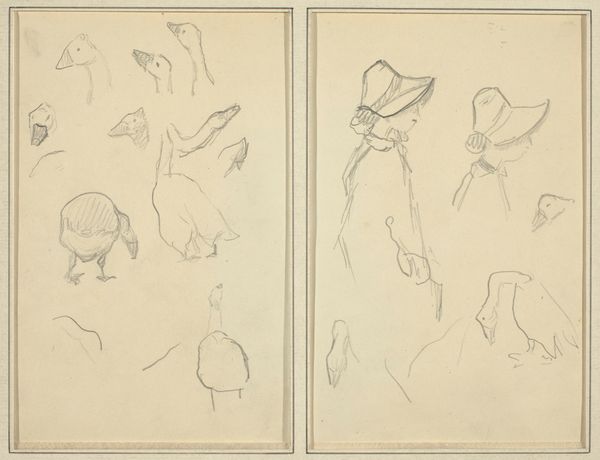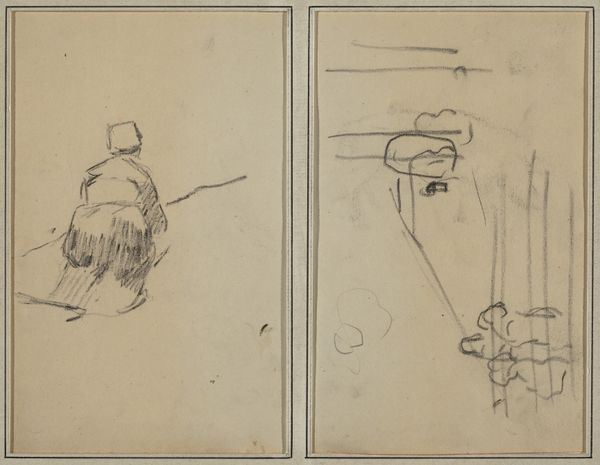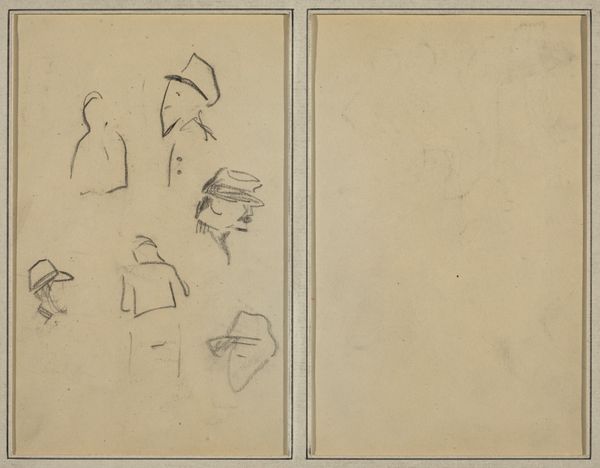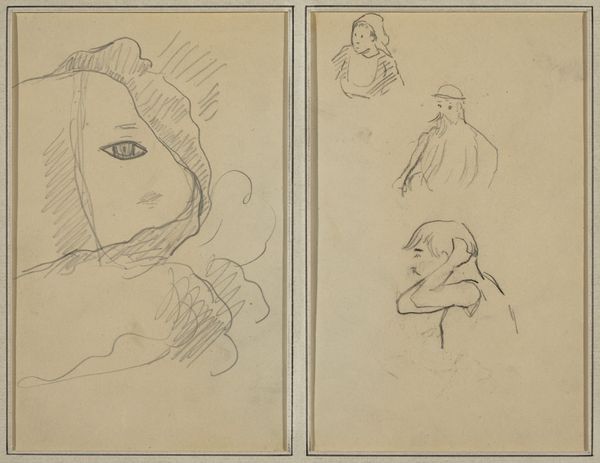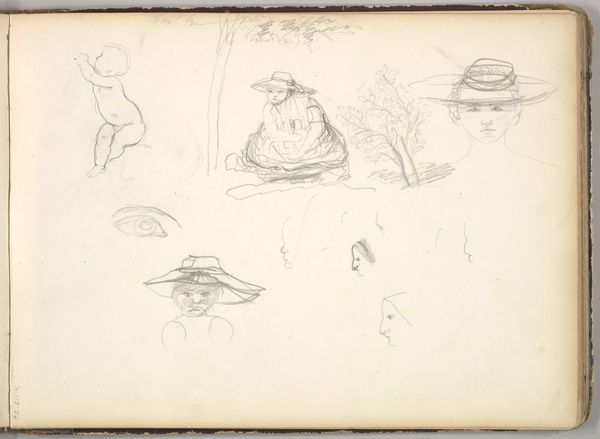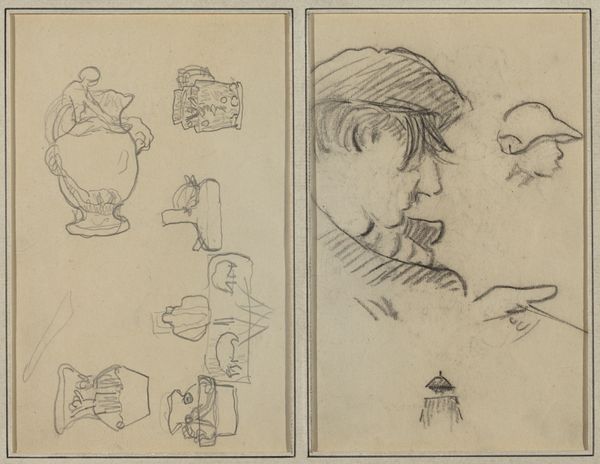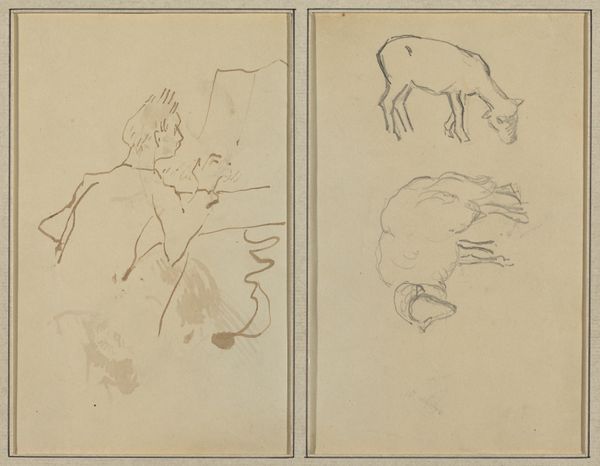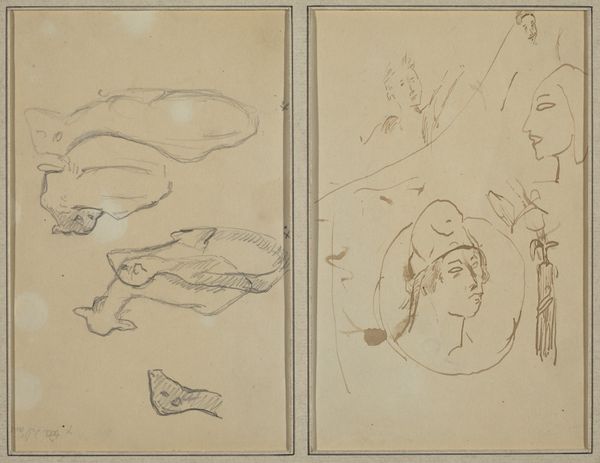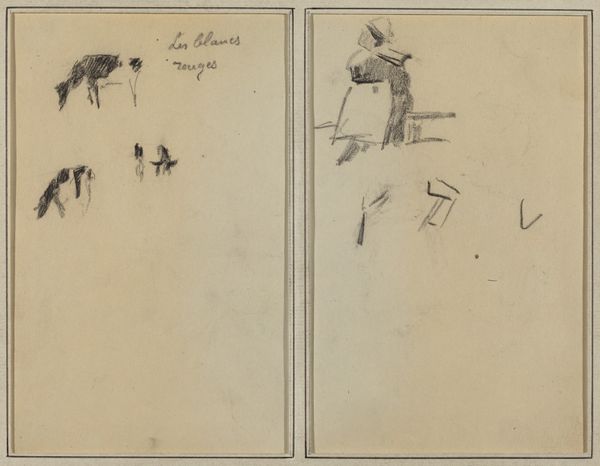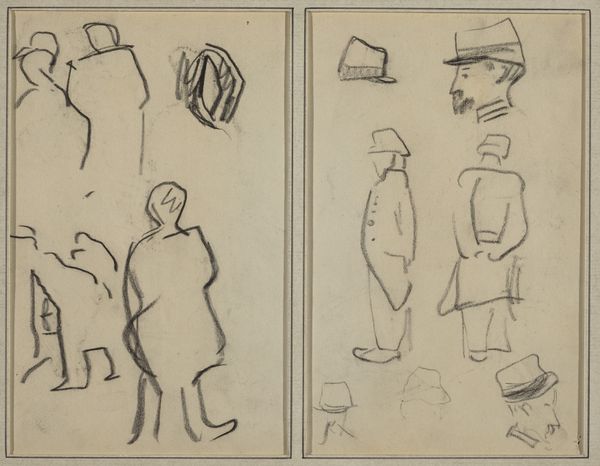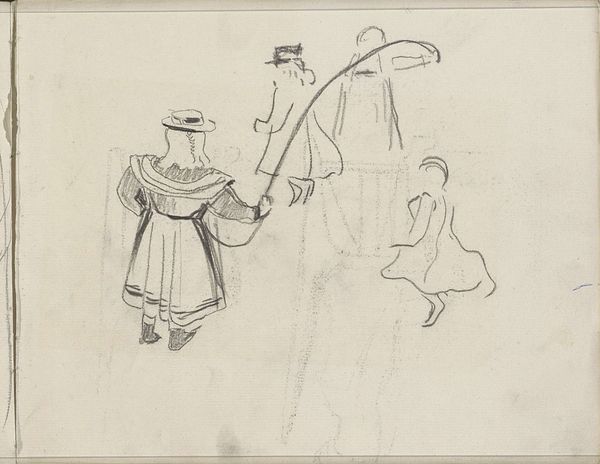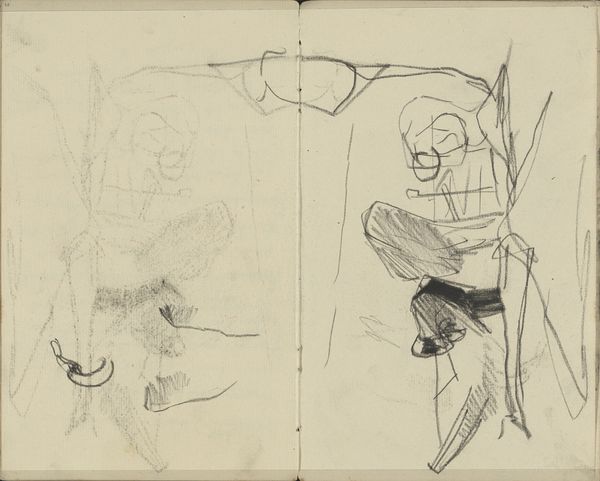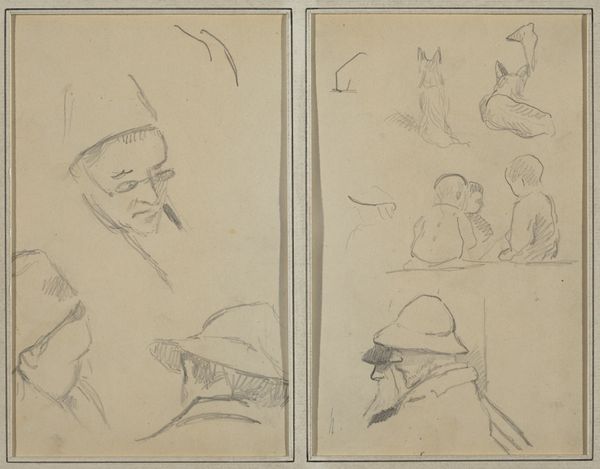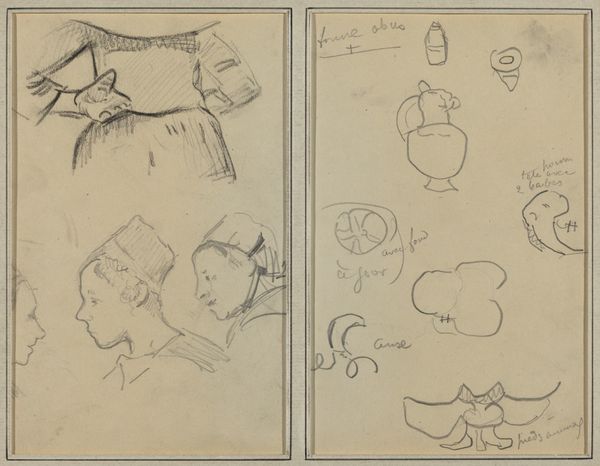![Two Breton Figures and Studies of Two Geese; Man Wearing Hat [verso] by Paul Gauguin](/_next/image?url=https%3A%2F%2Fd2w8kbdekdi1gv.cloudfront.net%2FeyJidWNrZXQiOiAiYXJ0ZXJhLWltYWdlcy1idWNrZXQiLCAia2V5IjogImFydHdvcmtzLzEzYmMxYWVkLWRhMTYtNDY2Zi05OWE4LTUyZmI4OGQzOWQ4Zi8xM2JjMWFlZC1kYTE2LTQ2NmYtOTlhOC01MmZiODhkMzlkOGZfZnVsbC5qcGciLCAiZWRpdHMiOiB7InJlc2l6ZSI6IHsid2lkdGgiOiAxOTIwLCAiaGVpZ2h0IjogMTkyMCwgImZpdCI6ICJpbnNpZGUifX19&w=3840&q=75)
Two Breton Figures and Studies of Two Geese; Man Wearing Hat [verso] 1884 - 1888
0:00
0:00
drawing, pencil
#
drawing
#
pencil sketch
#
landscape
#
figuration
#
pencil
#
post-impressionism
Dimensions: overall: 16.9 x 22.3 cm (6 5/8 x 8 3/4 in.)
Copyright: National Gallery of Art: CC0 1.0
Editor: This is Paul Gauguin’s “Two Breton Figures and Studies of Two Geese; Man Wearing Hat” from 1884 to 1888, made with pencil on paper. It's a pretty spare drawing – all very light and gestural. What's your initial take on the formal structure of this sketch? Curator: Initially, one is struck by the economy of line. Note the deftness with which Gauguin renders form and volume using solely pencil. The composition itself is segmented, bisected almost, presenting differing studies on each side, unified through medium and artistic gesture. How do you perceive the interplay between these discrete groupings of sketches? Editor: Well, it seems like a study in contrasts. The left side shows more complete figures – people and even geese! – whereas the right focuses on a single portrait, a face beneath a hat, and appears somehow more abstract or fragmented, despite being a face. Does the duality of form signify a deeper tension, or merely represent different observational approaches? Curator: Precisely. Notice how Gauguin deploys a range of line weights. Thicker, bolder strokes define outlines, whilst finer lines suggest shadow and texture. This oscillation imbues the drawings with an inherent rhythm and a sense of dynamism. In considering semiotics, can we interpret the interplay between subject and the artist's application to the materiality? Editor: So it's like the differing pressures of the pencil almost act as another element, defining the artwork's character as much as the figures themselves? Curator: Exactly! Think of it like language, each stroke functioning like a word or a phoneme within a structure or sentence that constructs an artwork in line alone. Gauguin’s command of line facilitates this interplay between depth and shallowness, figuration and abstraction. The image doesn't seek to be photorealistic; it examines drawing’s potential, as process made permanent. Editor: I see that now. It’s less about who these figures are, and more about *how* Gauguin is seeing, representing, and composing. Curator: Precisely. It underscores how attention to formal elements can yield richer and ultimately rewarding art observation. Editor: Definitely given me a new appreciation for simple sketches!
Comments
No comments
Be the first to comment and join the conversation on the ultimate creative platform.
